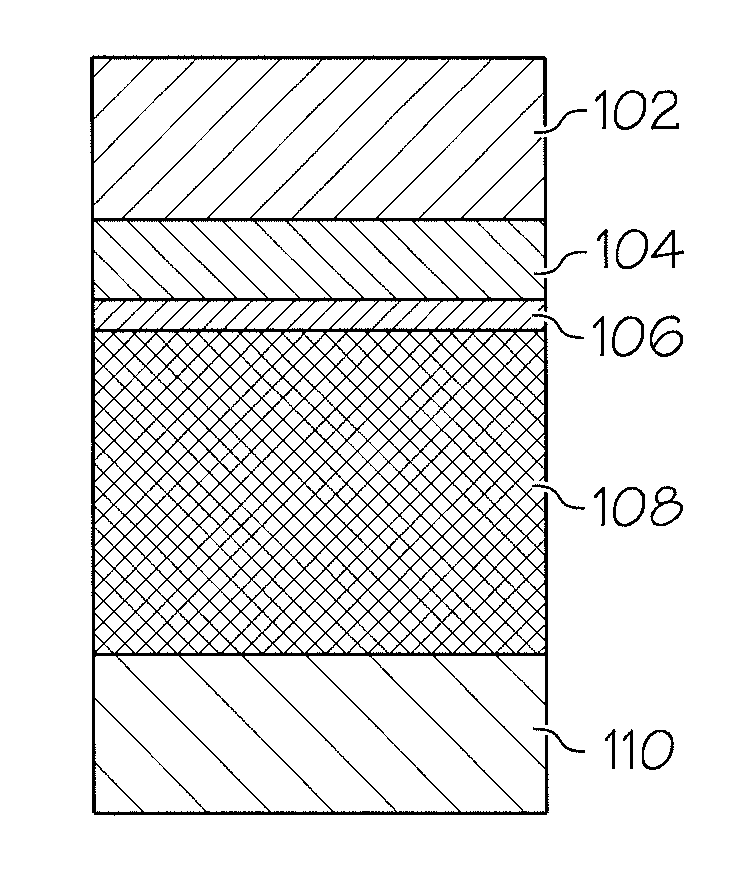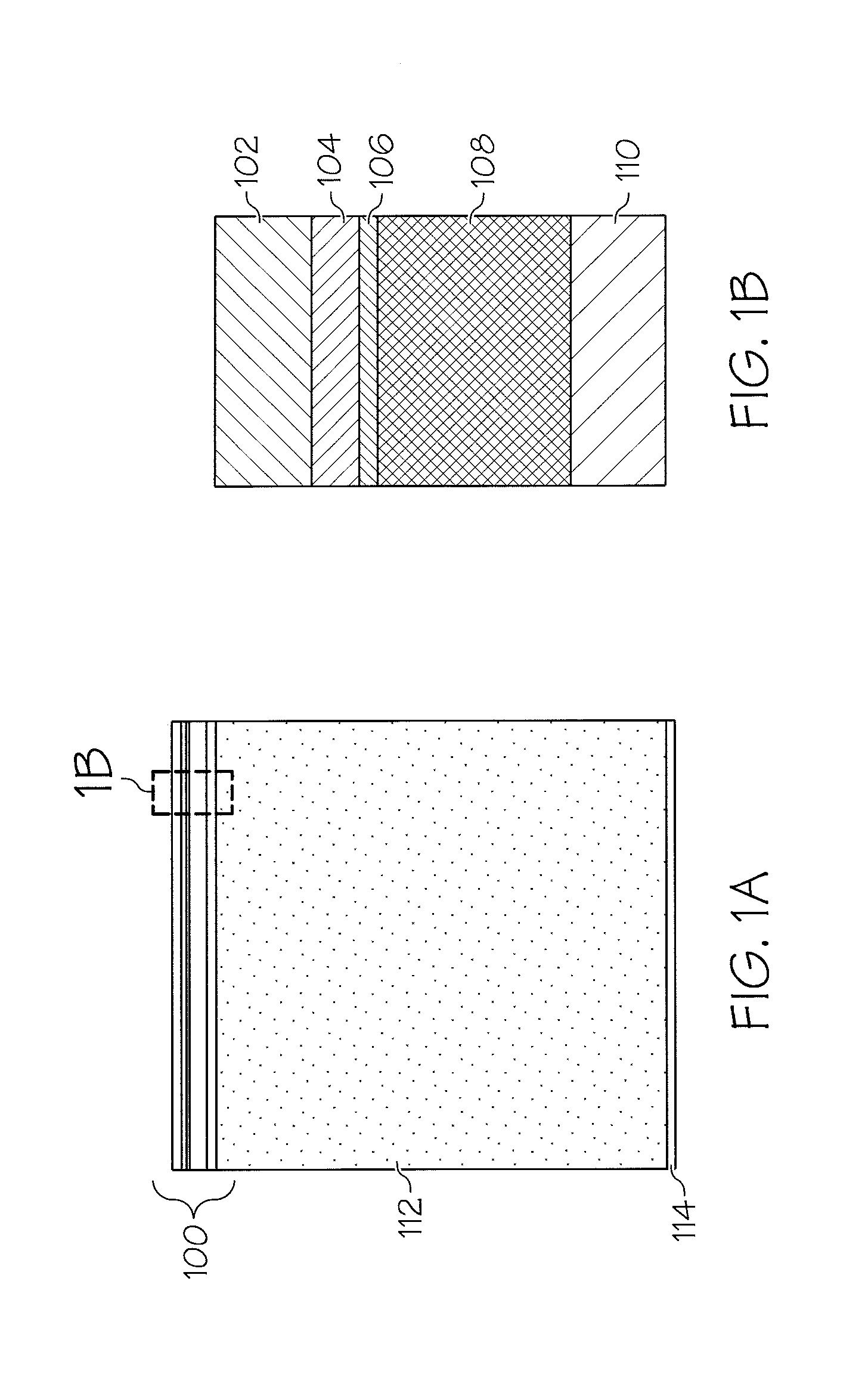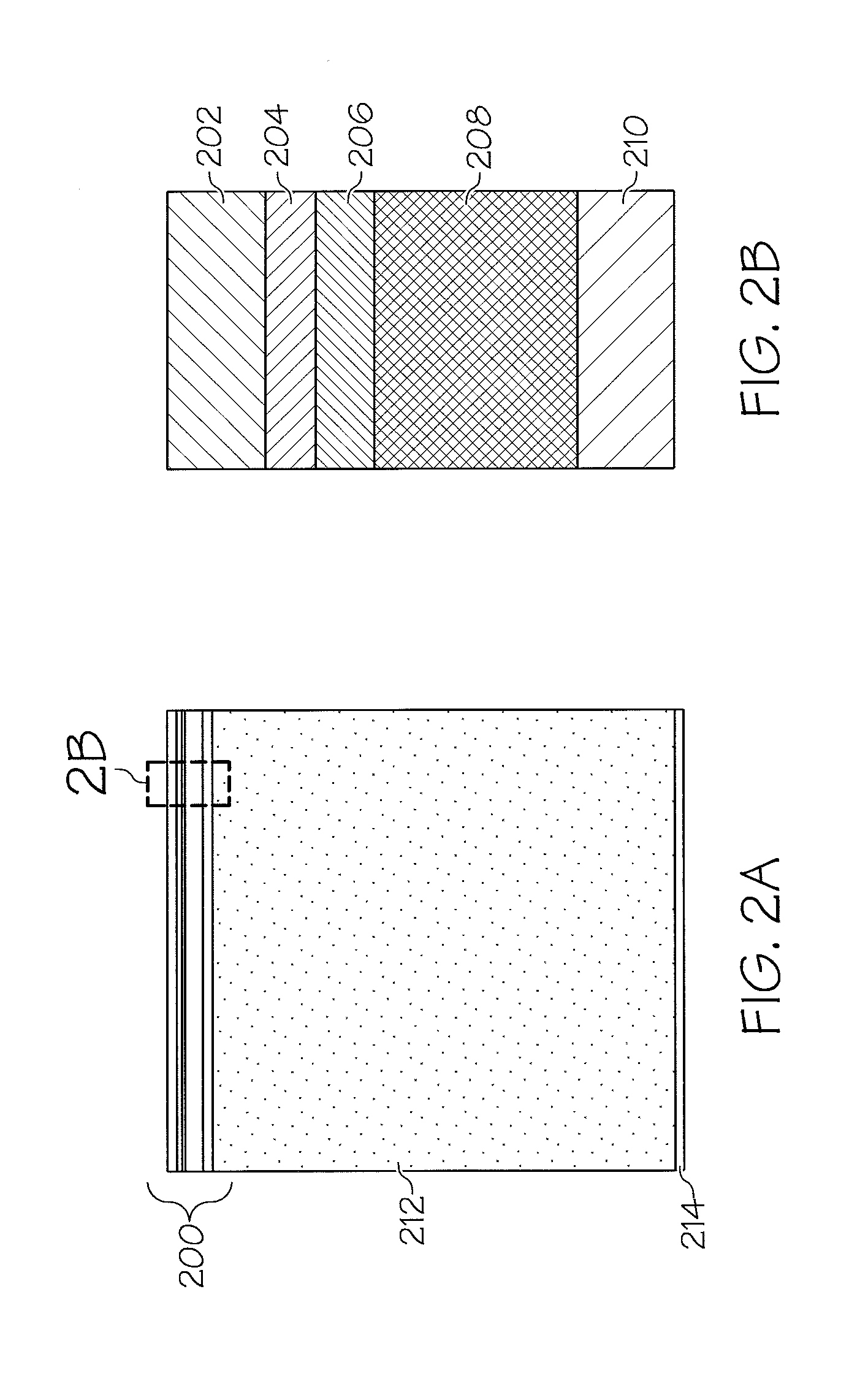Cd-Free, Oxide Buffer Layers For Thin Film CIGS Solar Cells By Chemical Solution Deposition Methods
a technology of cadmium-containing materials and oxide buffer layers, which is applied in the direction of pv power plants, basic electric elements, and final product manufacturing, etc., can solve the problems of limited market acceptance of cadmium-containing materials, additional cost to produce the device in an environmentally benign manner, and multiple chemicals, etc., to achieve the effect of increasing energy conversion efficiency
- Summary
- Abstract
- Description
- Claims
- Application Information
AI Technical Summary
Problems solved by technology
Method used
Image
Examples
example 2
Preparation and Characterization of CIGS Solar Cells without an i-ZnO Buffer Layer
[0031]This example teaches by way of illustration, not by limitation, preparation and characterization of CIGS solar cells with a Cd-free, oxide buffer layer and without an i-ZnO buffer layer. Elimination of the i-ZnO buffer layer eliminates moisture sensitivity of the CIG device. The need for an additional i-ZnO layer is eliminated by utilizing thicker ZTO layers, as shown in FIG. 4. FIG. 4 compared a CIGS-based device with a CdS layer, a CIGS-based devices with ZTO layers. Curve 400, curve 402, curve 404, and curve 406 display the current density, the fill factor, the VOC, and the conversion efficiencies, respectively, for a CIGS-based device containing a CdS layer. Curve 408, curve 410, curve 412, and curve 414 display the current density, the fill factor, the VOC, and the conversion efficiencies, respectively, for a CIGS-based device containing a ZTO layer (with composition Zn0.75Sn0.25Oy), an i-Zn...
PUM
 Login to View More
Login to View More Abstract
Description
Claims
Application Information
 Login to View More
Login to View More - R&D
- Intellectual Property
- Life Sciences
- Materials
- Tech Scout
- Unparalleled Data Quality
- Higher Quality Content
- 60% Fewer Hallucinations
Browse by: Latest US Patents, China's latest patents, Technical Efficacy Thesaurus, Application Domain, Technology Topic, Popular Technical Reports.
© 2025 PatSnap. All rights reserved.Legal|Privacy policy|Modern Slavery Act Transparency Statement|Sitemap|About US| Contact US: help@patsnap.com



